Botswana Food: Basic Overview
Common Ingredients
Common Cooking Methods
Courses
Meals
Key Taste
Eating Etiquette
Meal Presentation
Culinary Festivals
Influence and Fusion
Popular Types of Botswana Food
-
Porridge
Porridge is a staple food here.
They are made primarily from local grains such as sorghum, maize, or millet. Fermentation is sometimes used to give the porridge a sour taste
Some porridge recipes can be eaten as their own meal or paired with meat and vegetables for a hearty meal.
-
Stews
Stews are slow-cooked dishes, blending spices, meat, and vegetables.
Common ingredients include beef, goat, and chicken simmered with onions, tomatoes, and local herbs.
Stews in Botswana are often served with a side of pap (maize porridge).
-
Grilled and Barbecued Dishes
Grilling and barbecuing delights are important in the social and communal aspects.
Meats such as beef, lamb, and chicken are marinated with a mix of local spices and then cooked over an open flame.
Discover the rich flavors of Botswana dishes, a culinary gem nestled in Southern Africa. The cuisine is deeply influenced by the country’s geography, culture, and history.
While it’s renowned for its majestic wildlife and landscapes, its food tells a story of cultural fusion and age-old traditions.
It features many dishes that use locally available ingredients, including meat, grains, vegetables, and legumes.
Grain-based dishes like sorghum and maize porridge (bogobe) are staples. Beef, Tswana chicken, goat, and sheep meat are particularly prominent, reflecting the country’s strong cattle-rearing traditions.
Traditional dishes often involve slow-cooking methods to tenderize meat, as seen in the national dish, seswaa. Food preservation techniques are well-practiced, showcasing the country’s adeptness in sustaining its food resources over time.
Fruits are also common here, and watermelons are believed to have originated in Botswana.
Today, I’m excited to share with you an exploration of Botswana’s rich cuisine, featuring 22 delectable dishes. Initially, I’ll dive into the tradition behind these beloved meals, their standing on the international stage, and the health benefits they offer.
To complete the culinary journey, I’ll recommend pairing beverages with dishes in Botswana style. Let’s get started!
22 Popular Botswana Dishes with Filters
Ready to savor the unique dishes? Delve into the curated list below showcasing 22 of Botswana’s most beloved dishes. Don’t forget to use the filter for easier search.
Here are some key notes about the most common, traditional, national, street delights, exotic, and fusion dishes in Botswana.
Street food in Botswana provides delicious and affordable options. Popular street foods include grilled meats, chicken feet, cakes, etc.
Dishes like mopane worms are prepared in various ways, highlighting the nation’s indigenous food resources.
Seswaa
- National
- Traditional
Seswaa is a national dish of Botswana. This dish is made up of beef or goat meat. Locals normally use leftover cuts like legs, neck, and back to prepare this food.
Typically, seswaa takes about 5 hours to cook with salt and water so that the meat becomes soft and melts in your mouth when eating.
In the rural areas of Botswana, people often cook this dish in the morning and enjoy it at dinner. It is an essential recipe for special occasions like weddings, funerals, and national events like Independence Day.
Mogodu
- Street Food
- Traditional
Mogodu is a very popular stew in Botswana. It’s made from tripe, often enjoyed as a hearty dish.
The variant known as Mala Mogodu includes the stomach lining, which is meticulously cleaned and then slow-cooked with spices and sometimes vegetables to create a savory stew.
This dish holds a significant place in South African cuisine, particularly among various ethnic groups. It is commonly served with pap (maize porridge) or bread.
Morogo
- Traditional
Morogo is a staple dish in many African countries, including Botswana. Morogo refers to a type of dark green spinach leaf that is commonly found growing among beans, making it a favorite choice for plant-based dishes.
This food basically has a gentle taste. It becomes more flavorful with onions and tomatoes. In Botswana, there are two standard versions of morogo, including morogo wa dinawa and morogo wa thepe.
You can easily find morogo wa dinawa in the backyard of houses in this country, while the remaining type appears outside of cattle kraals.
Motogo
- Traditional
Motogo is a delightful breakfast option in Botswana, primarily made from sorghum and millet flour. This delicious dish is created by stirring the flour into boiling water until it becomes thick and bubbly.
For a unique twist, sorghum is sometimes fermented for weeks to produce a bitter ingredient known as ting, which, when added to Motogo, enhances its flavor profile. Typically, motogo is served with milk, jam, and peanut butter for added richness and taste.
Bogobe
- Traditional
Bogobe is a well-known type of porridge in Botswana. It’s made from sorghum, millet, or maize flour. The flour is mixed with water and then slowly cooked to a thick consistency. Often, it’s left to ferment overnight, which gives it a slightly sour taste.
This staple dish can also be prepared by adding milk or sour milk (known as “madila” or “lacto”) to create bogobe jwa lebelebele (a softer version) or by incorporating meat or vegetables.
Bogobe is a favorite option for weddings and social gatherings.
Dikgobe
- Traditional
In Botswana, dikgobe is a harmonious combination of samp and beans and is cooked in low heat for a particular time to get the desired flavor and texture.
To enhance its taste, you should enjoy it with a savory sauce. In some cases, you can find corn and lamb in this food. It appears commonly at Setswana celebrations like weddings or marking death. It usually goes with sorghum at funerals.
Pap
- Traditional
Pap is a staple food commonly found across Southern Africa, including Botswana. It’s a traditional porridge made primarily from maize meal (cornmeal) that is cooked with water and salt to achieve a thick, smooth consistency.
In fact, it can be enjoyed in different forms, ranging from a soft, creamy texture to a firmer, more solid state.
Pap normally comes with stewed meat or vegetables at Botswana restaurants. Primarily, you will use your fingers to eat this food instead of using chopsticks or spoons.
Menoto
- Street Food
- Traditional
In Botswana, menoto is a popular snack that perfectly complements a cold beer. The term “Menoto” translates to “chicken feet” in Setswana, which is the main ingredient of this beloved dish.
Known for being a staple of street food, chicken feet are marinated in a variety of spices before being grilled. In some instances, they are also stewed to make the most of their natural gelatin. When visiting Botswana, you’ll find that restaurants often serve generous portions of menoto, a reflection of its popularity and the occasional scarcity of other meats.
Koko Ya Setswana
- Exotic
- Traditional
Koko ya setswana is a dish you can only find in Botswana because the Setswana chicken used to make this food is indigenous. Its chewiness is like rubber, so it needs about 2 to 3 hours of slow-cooking.
Chicken marinosis will be done after the slow cooking process, so this food has an intense flavor. You will not find Setswana chicken on the market because it is sold while alive and is slaughtered and processed by hand.
Ditloo
- Traditional
Ditloo or jugo beans, nyimo beans, or bambara groundnuts is a famous food in Africa, including Botswana. It originated from North Africa and was widespread throughout the continent.
Locals typically soak these beans overnight to make them softer and easier to process. You can enjoy it as a snack or add to porridge in powder form.
Mopane Worms
- Exotic
- Traditional
Mopane worms are one of the worth-trying dishes of Botswana cuisine. These caterpillar-like worms are served with peanut sauce or tomato stew to enhance their flavors.
There are many traces of mopane worms found in the Pomongwe Cave. These traces show that this dish was born 6000 years ago. In particular, this is a portion of good food for your health when it contains many helpful calcium and proteins for your body.
Vetkoek
- Street Food
- Traditional
Vetkoek is another must-try food while traveling to Botswana. This food includes fried bread and ground meat filling. It’s quite famous in many African countries.
The word “Vetkoel” in Afrikaans means “fat cake”. You can easily buy it in takeaway restaurants, fast food shops, or roadside vendors in the country. In addition, it also appears often at festivals and cultural events.
Matemekwane
- Street Food
- Traditional
Matemekwane is a famous dumpling dish of Botswana. Although it does not originate in this country, it is loved widely and has become a staple food here.
You will love the crispness of the outside fried dough and the rich taste of meat or vegetable filling. You can choose the Matemekwane version with veggie fillings if you are a vegetarian. This food usually goes with dips and soup.
Mogatla
- Traditional
Mogatla is a Botswana oxtail stew with a rich and distinctive flavor. This recipe comes from the tradition of breeding and selling cattle of Batswana.
They will retain cheap parts like tails for cooking on special occasions. Because the cow’s tail has tough meat and big bones, cooking takes a long time.
However, when cooking for a long time, the flavor of onions, broth, bay leaves, and tomatoes will absorb evenly into the whole bull tail and bring an appealing taste when eating.
Leleme
- Exotic
- Traditional
Leleme is a unique dish in Botswana. Cow’s tongue plays an essential role in making the great taste of this recipe. In Setswana, this part is called “Leleme La Kgomo”.
When enjoying the slices of toasted beef tongue, you will feel the delicate and warm flavor that this delicious food brings. In particular, this food must be enjoyed by women in Botswana tradition.
Serobe
- Traditional
Serobe is a traditional dish from Botswana, made by cooking the intestines, tripe, and sometimes lungs and kidneys of goats, sheep, or cows.
These organs are thoroughly cleaned and then slow-cooked until tender, often with local spices and sometimes with vegetables.
Serobe is typically savored with pap (maize porridge) or bread.
Braai Meat
- Traditional
Braai meat, a cornerstone of Southern African cuisine, uses different meats such as lamb chops, steak, and Boerewors sausage, especially popular in Botswana.
Seasoned with local spices, salt, and pepper, these meats are grilled over hot coals to achieve a rich flavor, often accompanied by a relish made of garlic, tomatoes, and onions.
Braai meat is celebrated during National Braai Day on September 24th, a day dedicated to embracing this culinary tradition across the region.
Chicken In A Hole
- Traditional
In Botswana cuisine, Chicken In A Hole is a tasty chicken barbecue dish with incredible fragrance and flavor.
This method involves digging a hole in the ground, heating stones in a fire, and then placing the stones in the hole. A seasoned chicken, often marinated with local herbs and spices, is then wrapped in leaves or foil and placed in the hole, hence its name.
The chicken is covered with more hot stones and soil, creating an oven-like environment that slowly cooks the chicken. Cabbage, paprika, and herbs are ideal accompaniments to improve the meat taste.
Segwapa
- Traditional
Segwapa, also known as biltong or beef jerky, is an achievement of Botswana’s meat preservation method. Traditionally, locals divide into different parts for processing, storage, and consumption after slaughtering a cow.
You will feel the mild salty taste and the typical flavor of vinegar, coriander, black pepper, and cloves when eating shredded Segwapa. Plus, this dish is crucial for winter.
Diphaphatha
- Traditional
Diphaphatha is a kind of stovetop muffin of Botswana cuisine. This recipe is pretty similar to muffin – an iconic British dessert. The British brought materials and baked goods to Tswana soil and gradually became mainstays in Botswana.
Compared to English muffins, this food requires less processing time, materials, and tools. This soft and chewy muffin recipe with the savory and sweet filling is processed in cast-iron pans.
Mapakiwa
- Fusion
- Traditional
While it draws inspiration from British cuisine, mapakiwa stands as a distinctly Botswanan delicacy, primarily composed of flour, butter, and eggs.
It is a dish interference between a scone and a bun with the texture of a brioche roll. The butter layer is brushed when baking will bring a fascinating aroma to this dessert.
Botswana people often enjoy it along with a cup of tea during the relaxing time. A little jam, butter, raisins, or apple will enhance its flavor.
Malva Pudding
- Traditional
Malva pudding is an ideal dessert that you can try in Botswana. This delicious pudding has apricot jam and cream sauce. Its spongy caramelized texture will fascinate you. It’s often served with custard or ice cream.
This extraordinary dessert originates from the Netherlands, and the Dutch brought it to South Africa in the middle of the 1600s when they invaded this continent.
Malva pudding enjoys popularity beyond Africa, especially on the U.S. West Coast, thanks to chef Art Smith, who introduced it at a 2006 Christmas dinner for Oprah Winfrey Leadership Academy For Girls
What Are Beverages To Pair with Botswana Dishes?
To pair with Botswana dishes, various traditional beverages can complement these delights, such as:
Perhaps Botswana’s dishes and cuisine are pretty strange to everyone, so I hope this article will bring this country’s food culture closer to many people. If you have the opportunity to come to this country, let’s try these foods.
Please spread this exciting and valuable article to many people through likes and sharing it. I always look forward to receiving your questions and contributing ideas after reading this post in the comment section. Thanks for reading!


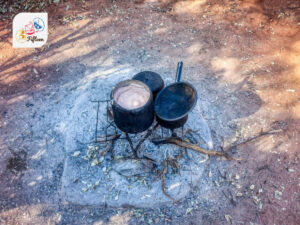
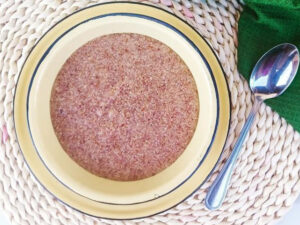
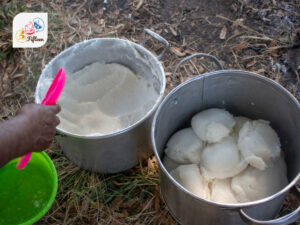
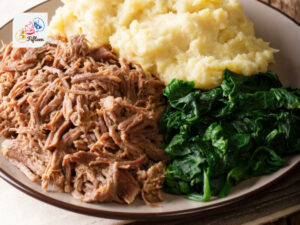
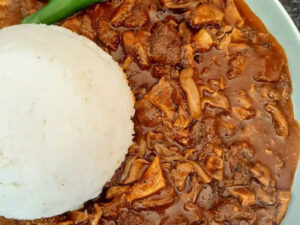
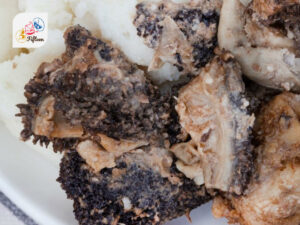
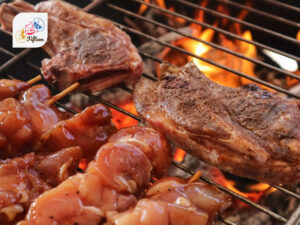
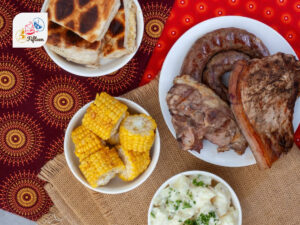
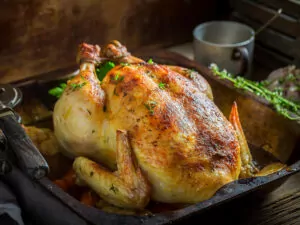
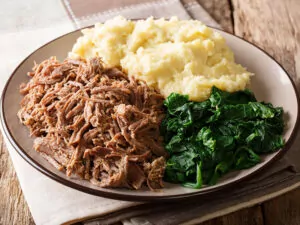
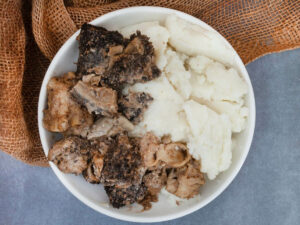
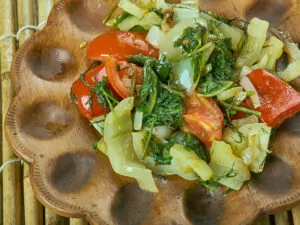
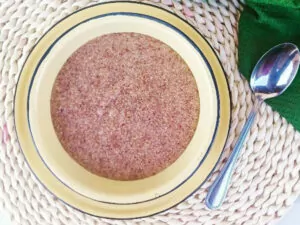
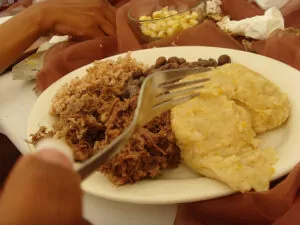
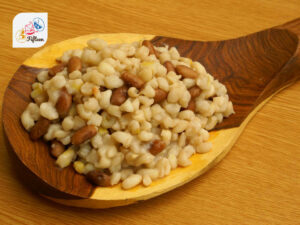
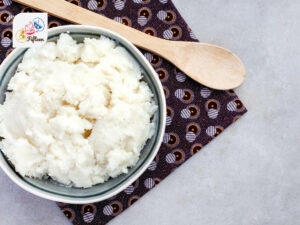
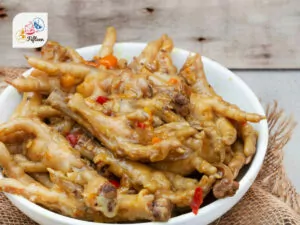
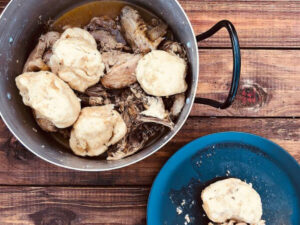
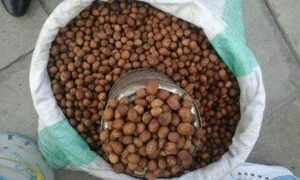
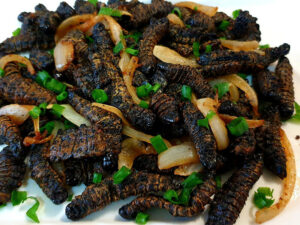
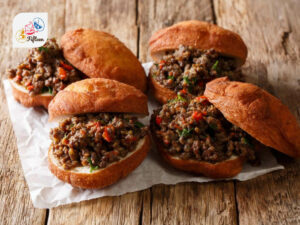
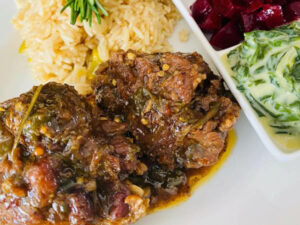
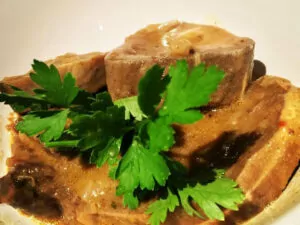
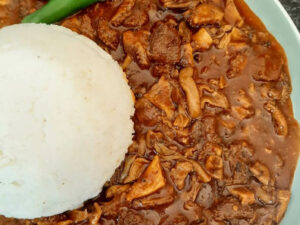
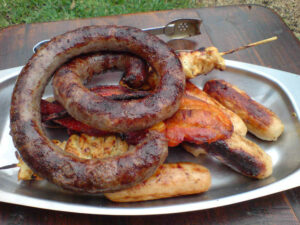
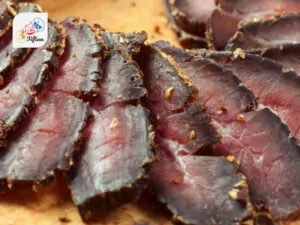
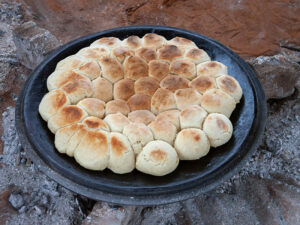
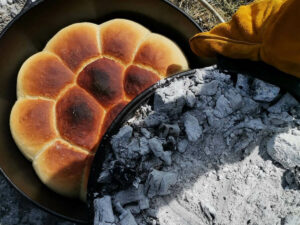
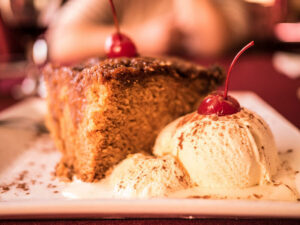
Jamie Scott
Editor in Chief, Senior Content Writer
Expertise
Home Cooking, Meal Planning, Recipe Development, Baking and Pastry, Food Editor, Cooking-video Maker, Western Food Evaluation Expert
Education
Le Cordon Bleu College of Culinary Arts
Local Community College, New York, NY
Jamie Scott is a skilled culinary expert and content creator specializing in Western cuisine. With over 15 years in the culinary field and formal training from Le Cordon Bleu, Paris, Jamie deeply understands how to blend nutrition with delicious flavors. His passion for cooking matches his commitment to making healthy eating accessible and enjoyable.
On Fifteen.net, Jamie brings a fresh perspective to classic dishes and beverages, offering readers insightful recipes, cooking tips, and a fresh view on meal planning that emphasizes taste, health, and simplicity.